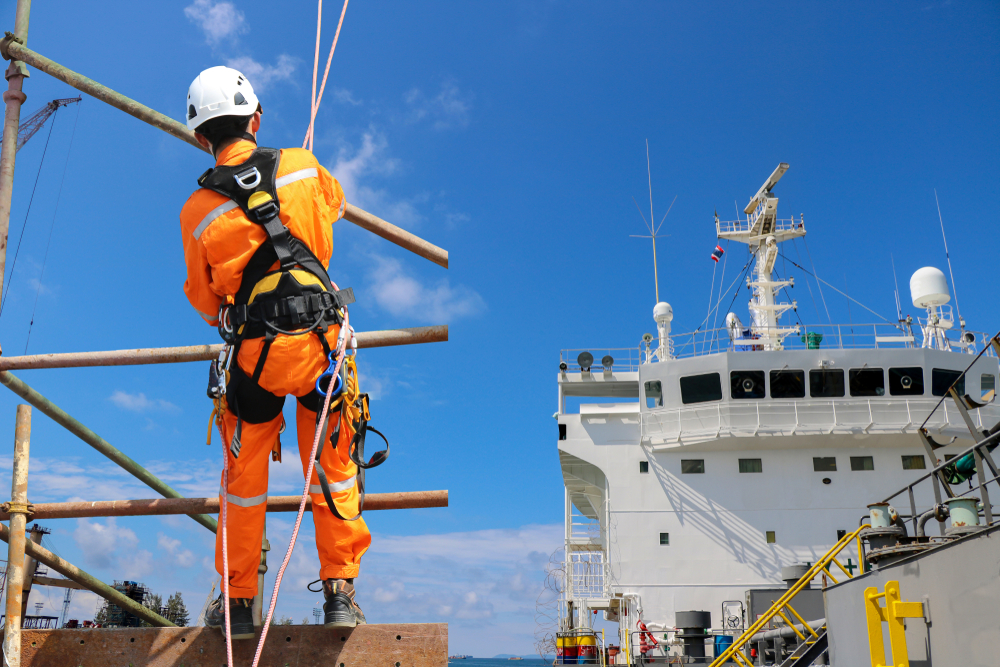Effective Marine Navigation & Communication is the backbone of modern maritime operations. Whether it’s guiding ships safely through busy shipping lanes or maintaining constant contact with distant ports and rescue centers, these systems ensure vessels operate efficiently and safely on the open seas. The challenges of navigating vast oceans and maintaining communication beyond terrestrial networks demand sophisticated technology and reliable infrastructure.
Understanding Marine Navigation
Marine navigation refers to the process of directing a ship safely from one point to another. This fundamental maritime discipline has evolved significantly over the years. Historically, sailors relied on celestial navigation, charts, and compasses to find their way. Today, Marine Navigation & Communication incorporates advanced electronic tools like GPS (Global Positioning System), radar, sonar, and electronic navigational charts (ENCs).
These technologies enable precise positioning, obstacle detection, and route planning. GPS provides real-time location data, while radar and sonar detect other vessels, landmasses, and underwater hazards. Electronic charts give up-to-date maps of sea routes and ports, allowing crew members to make informed decisions quickly.
The Role of Communication in Maritime Safety
No matter how advanced navigation becomes, safe and efficient maritime operations depend on clear and constant communication. Reliable communication systems connect the entire maritime chain—ship owners, operators, crew members, port authorities, and rescue organizations—ensuring everyone is aligned.
Marine Navigation & Communication facilitates three critical types of contact:
- Ship-to-Ship: Allows vessels to share information about their position, speed, and course, helping avoid collisions.
- Ship-to-Land: Enables communication with coastal stations, ports, and maritime authorities for instructions, weather updates, and logistics.
- Land-to-Land: Supports coordination among port authorities, shipping companies, and emergency services onshore.
This communication network is especially vital during emergencies, where timely distress alerts can mean the difference between life and death. Ships must be able to send and receive urgent maritime safety information, including distress signals and rescue coordination updates.
Technology Behind Marine Communication
Unlike the reliable terrestrial networks we use daily on land, maritime communication infrastructure faces unique challenges due to the remote and constantly moving environment at sea. To overcome these hurdles, Marine Navigation & Communication relies heavily on a combination of satellite systems and land-based radio and telephone infrastructure.
Satellite Communication: Satellites provide global coverage, ensuring ships remain connected even in the most isolated parts of the ocean. Satellite communication supports both voice calls and data transmission, enabling ship operators to monitor vessel health, send navigation updates, and maintain contact with company headquarters.
Land-Based Radio and Telephone: Closer to shore, land-based radio and telephone networks complement satellite systems. Very High Frequency (VHF) radio is commonly used for short-range ship-to-ship and ship-to-shore communication, essential for routine coordination and safety messages.
Voice and Data Technologies: Modern Marine Navigation & Communication integrates state-of-the-art voice and data communication technologies. This means crews can enjoy crystal-clear voice calls and high-speed data links that support email, internet access, and real-time weather and chart updates, regardless of their location on the planet.
Onboard Communication Systems and Crew Welfare
Good communication onboard is not just a matter of operational efficiency; it directly impacts crew welfare and morale. Seafarers often spend months away from their families and social networks. Providing internet access onboard helps bridge this gap, enabling them to stay in touch via email, social media, and video calls.
Moreover, onboard communication systems facilitate access to critical information like weather updates, navigation charts, and position reporting. Access to telemedicine and remote diagnostics means that health issues can be addressed promptly without the need for immediate medical evacuation.
By supporting crew connectivity and wellbeing, Marine Navigation & Communication contributes to safer and more productive maritime operations.
Maritime Safety Information and Emergency Protocols
A cornerstone of Marine Navigation & Communication is the ability to handle emergency situations swiftly and effectively. Ships must be equipped to send distress alerts at any time, regardless of their location. These alerts are transmitted to rescue coordination centers ashore and nearby vessels.
The Global Maritime Distress and Safety System (GMDSS) is a key framework that ensures distress signals are sent automatically and received promptly. The system uses satellites and radio frequencies to alert rescue teams and provide accurate location information.
Real-world incidents highlight the importance of this communication. When accidents occur, rapid transmission of distress calls and maritime safety information can save lives by speeding up search and rescue operations.
Challenges in Marine Navigation & Communication
Maritime environments pose several challenges not typically encountered on land. Weather conditions such as storms, fog, and high waves can disrupt signals. Technical failures or equipment malfunctions may cause communication blackouts.
Coverage gaps in remote ocean areas sometimes create “dead zones” where connectivity is limited or lost. Despite these challenges, advances in technology continually improve reliability and coverage. Satellite networks are expanding, and backup systems ensure that critical communication remains intact even when primary systems fail.
Future Trends in Marine Navigation and Communication
The future of Marine Navigation & Communication is exciting, with emerging technologies promising to enhance safety, efficiency, and crew welfare.
- Artificial Intelligence (AI): AI-powered systems can analyze navigation data in real-time to predict hazards and optimize routes.
- Internet of Things (IoT): Connected sensors onboard vessels monitor everything from engine performance to weather conditions, sending data to operators instantly.
- 5G Networks: Though still developing for maritime use, 5G promises ultra-fast, low-latency communication near coasts and ports.
- Autonomous Vessels: Reliable communication will be essential for remotely controlling or monitoring autonomous ships.
These innovations will further reduce risks, lower costs, and improve the working conditions of seafarers.
Takeaway
Mastering Marine Navigation & Communication is vital for the safety and efficiency of maritime operations. Sophisticated navigation tools paired with advanced communication systems allow ships to traverse the globe while staying connected to the shore and other vessels.
Continuous improvements in technology help overcome the unique challenges posed by the marine environment, enhancing maritime safety and crew welfare. Staying informed about the latest developments in navigation and communication technology ensures that the shipping industry can meet future demands and challenges confidently.








